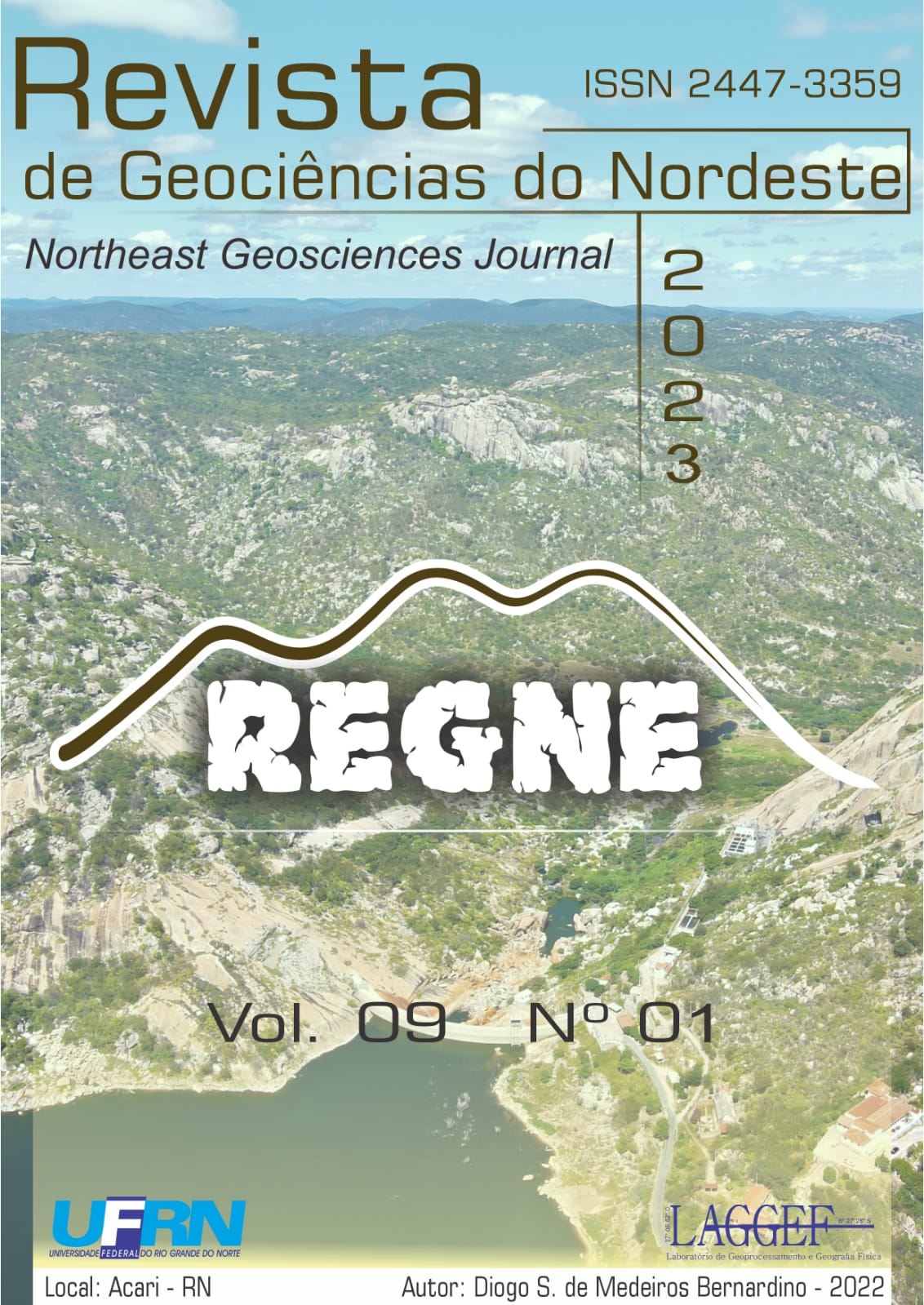Mapeamento de Vulnerabilidade Ambiental da Sub-bacia do Rio Bodó, na região da Serra de Santana, estado do Rio Grande do Norte, Brasil
Environmental Vulnerability Mapping of the Bodó River sub-basin, in the region of Serra de Santana, Rio Grande do Norte State, Brazil
DOI:
https://doi.org/10.21680/2447-3359.2023v9n1ID31583Abstract
The watersheds constitute a balanced natural system and are important planning units of water resources that make up the environmental systems. Considering the relevance of planning and environmental management today, this article aims to perform the mapping of environmental vulnerability of the Bodó River sub-basin, in the region of Serra de Santana, RN, with the application of algebra of maps and integrated analysis of its physical and environmental variables. For this, maps of slope, dissection index, geology, pedology and vegetation were made. These maps were weighted according to their morphodynamic stability/vulnerability, and then combined in map algebra. The map generated with the combination of these factors presented five vulnerability classes for the sub-basin in question: very weak, weak, moderate, strong and very strong. It is important to emphasize the need for studies aimed at quantifying with greater accuracy the environmental vulnerability in sub-basin areas and, in this way, to dictate the planning and environmental management of its resources with the sustainable management of its territory.
Downloads
Downloads
Published
How to Cite
Issue
Section
License
Copyright (c) 2023 Notheast Geoscience Journal

This work is licensed under a Creative Commons Attribution 4.0 International License.


 Português (Brasil)
Português (Brasil) English
English







